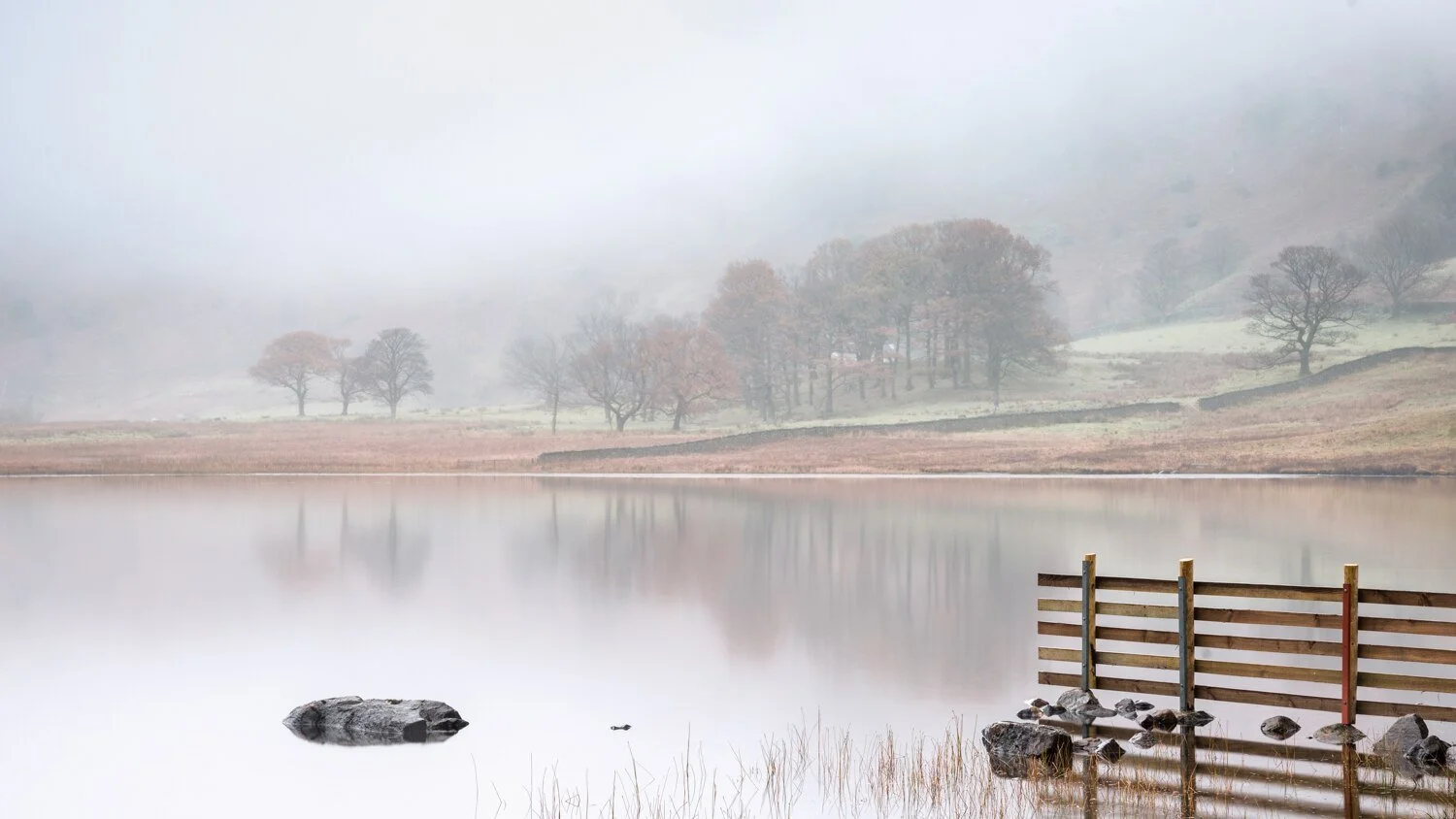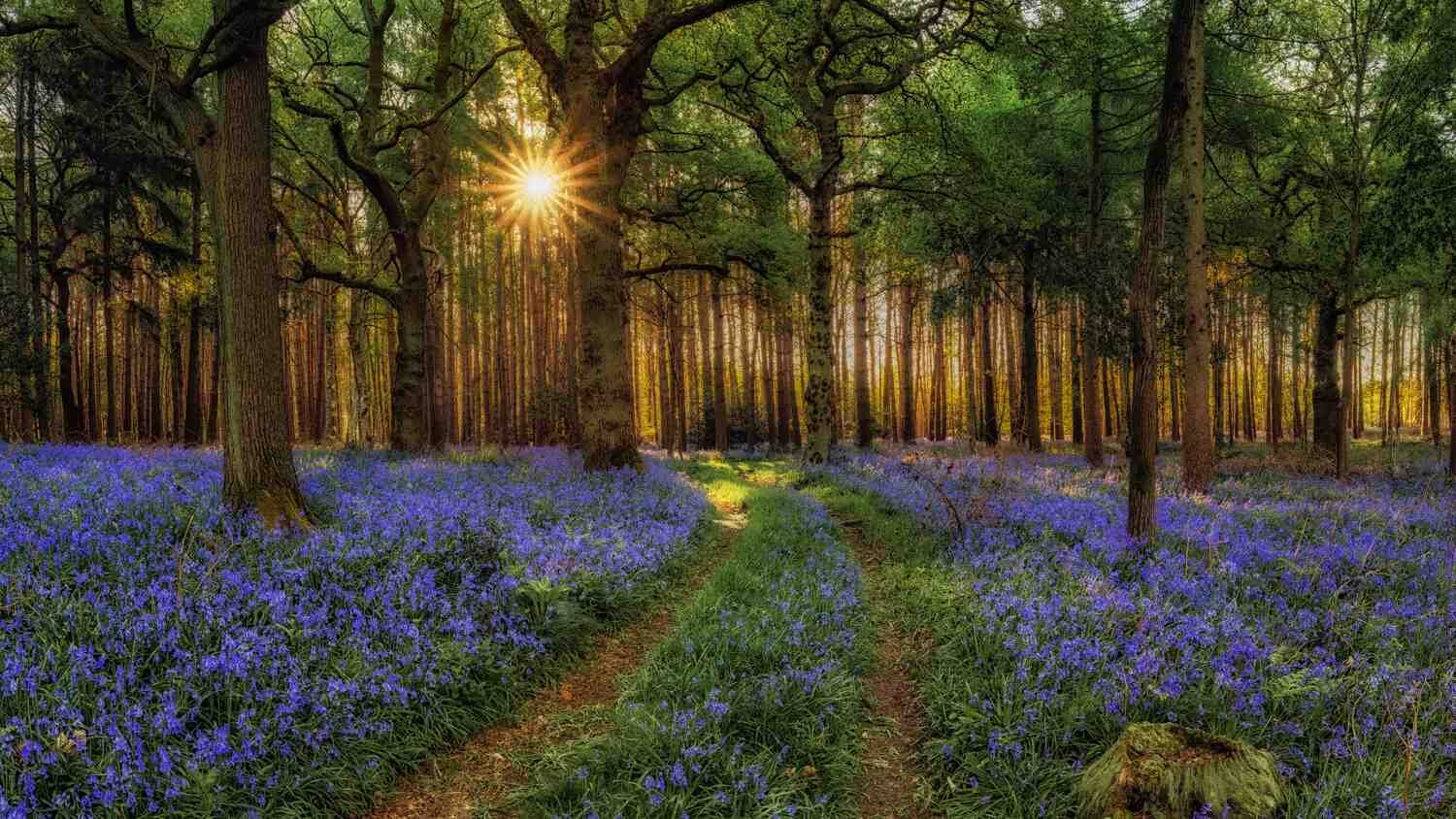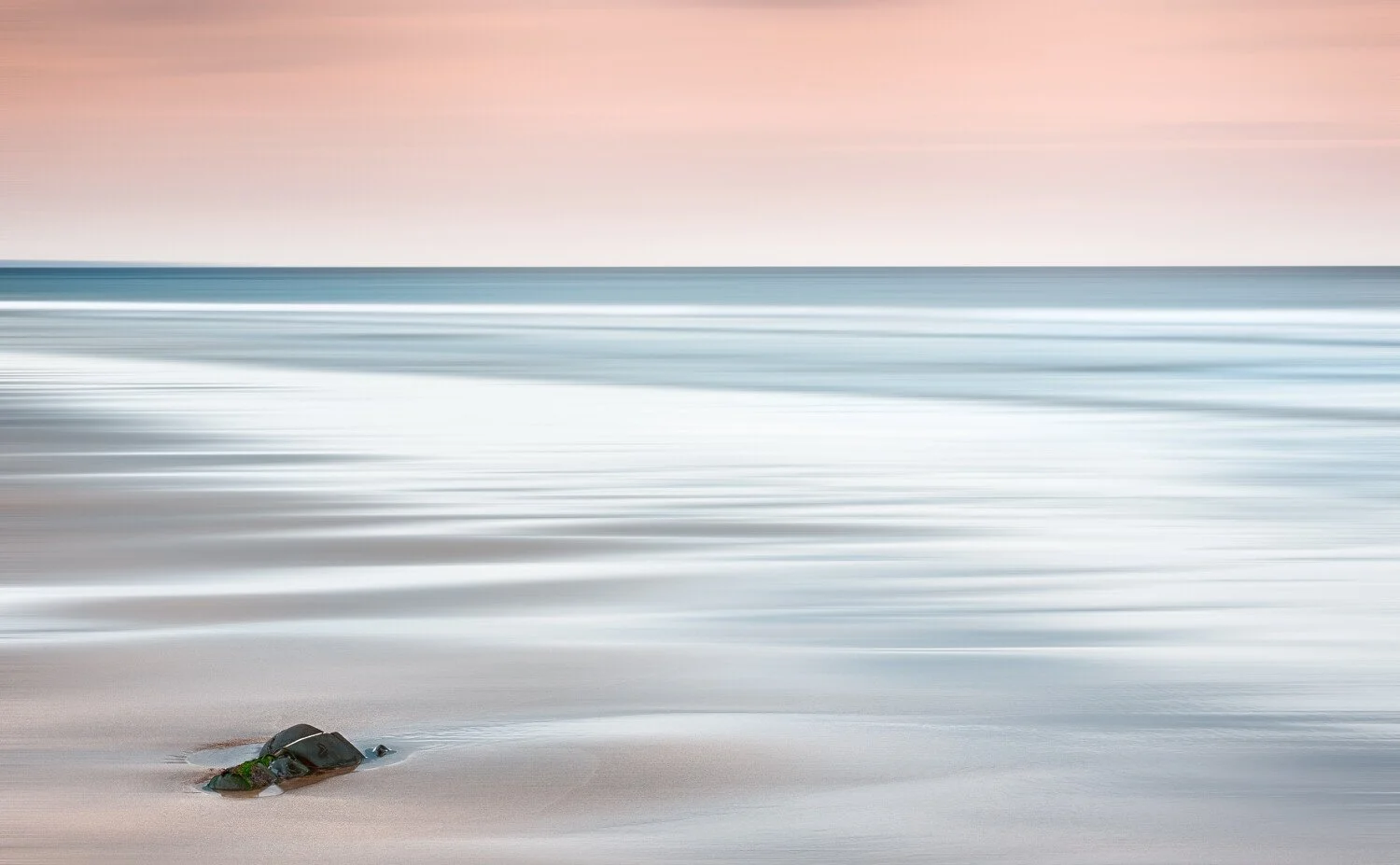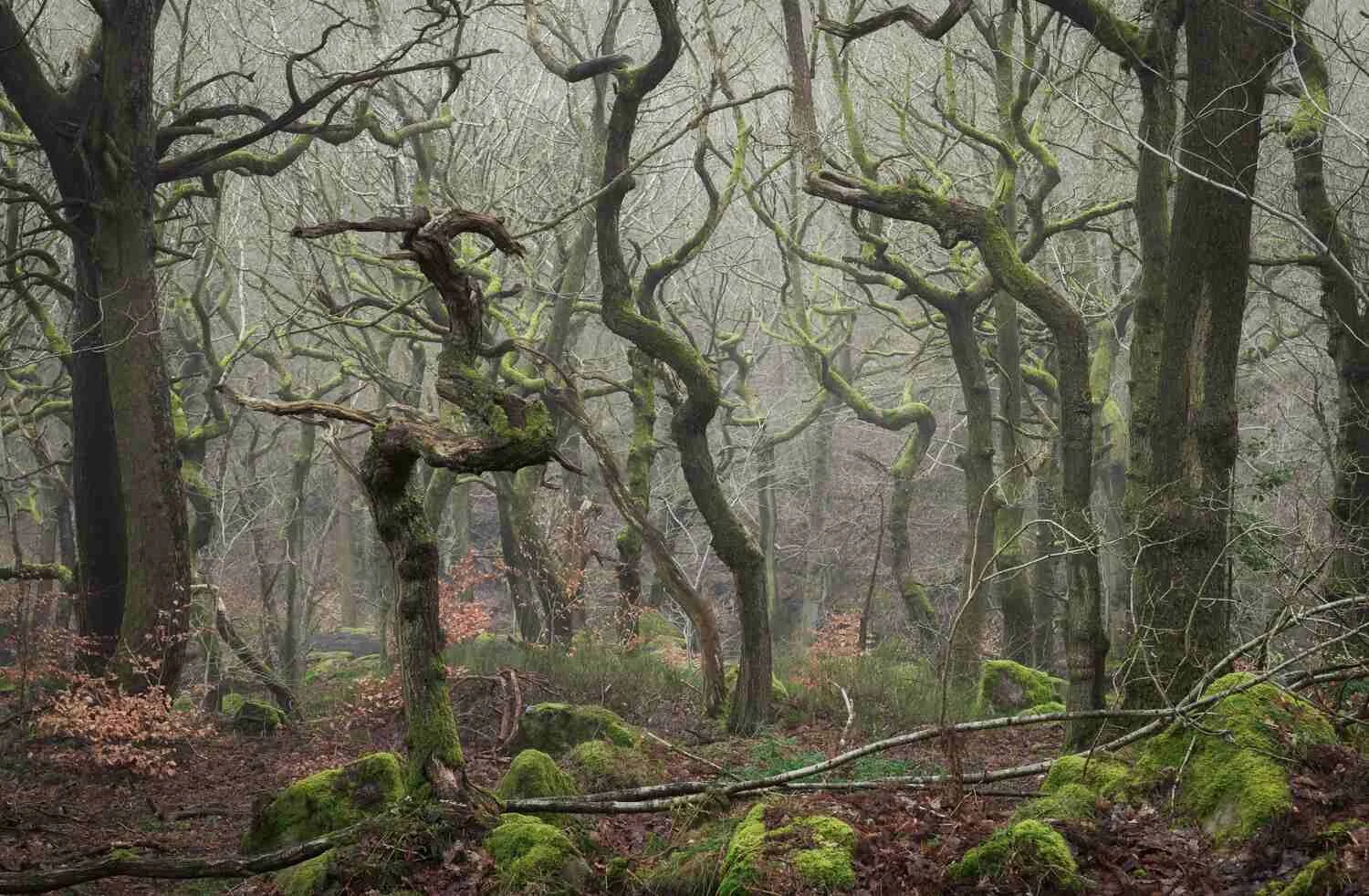Mastering Landscape Photography: Tips and Techniques
Table of Contents Show
Landscape photography is more than just pressing the shutter button; it's a journey into the heart of nature's grandeur, an opportunity to frame the world as we see it and share its untold stories. At its essence, this genre captures the inherent beauty of the natural world, striving to convey a sense of scale, majesty, and awe that transports the viewer right into the scene.
Connecting deeply with the environment, landscape photographers become storytellers, immortalising moments of beauty in natural landscapes through their lenses without altering the reality of the scenes before them. It's a discipline that has evolved significantly since Nicéphore Niépce captured the first landscape photograph in 1827, showing us how deeply integrated and significant landscape photography is in the history and future of photography.
Niépce took the first-ever photograph in 1826 or 1827 from an upstairs window of his estate in Saint-Lop-de-Varenees, Burgundy, France, using a camera obscura and a bitumen-coated pewter plate. He exposed it for several hours.
Joseph Nicéphore Niépce took the world's first photograph in 1826 with the first proper camera. Niépce took the photograph from the upstairs windows of his Burgundy estate.
Embarking on a landscape photography venture allows photographers to explore the nuances of natural landscapes, whether capturing the serene beauty of a cityscape under the twilight sky or the intricate patterns of astrophotography.
With advancements in technology, the array of equipment available—from drones capturing breathtaking aerial landscape pictures to underwater setups revealing the mysteries beneath the water's surface—has transformed how we approach and appreciate landscape images. Tailored for passionate photographers focusing on the United Kingdom landscape photography market, this article will provide essential tips for landscape photography and techniques, from mastering camera settings for long exposure photography to choosing the right gear and implementing advanced strategies. Get ready to dive into landscape photography workshops that promise to enrich your skill set and inspire you to capture beautiful landscape pictures.
Understanding Light
In the realm of landscape photography, mastering the nuances of light is crucial for capturing the essence of the natural landscapes across the United Kingdom. Light not only illuminates the scene but also shapes the mood and emotion conveyed through each photograph. Here are some key aspects of light that every photographer should understand:
Quality and Direction of Light
Soft Light: Predominantly found during overcast days or in open shade, soft light minimises shadows and helps achieve saturated colours, perfect for capturing the subtle tones of a misty British morning.
Hard Light: Occurs during bright sunny days, producing deep contrasts and pronounced shadows. This type of light is ideal for highlighting the rugged textures of natural landscapes like the Scottish Highlands.
Directional Light: The angle of light, whether it's the golden hues of morning and evening or the harsh midday sun, dramatically affects the visual impact of the landscape. Side lighting can enhance the texture and depth, while backlight can create ethereal silhouettes and highlight fine details such as morning dew on foliage.
Special Lighting Conditions
Backlight and Golden Hours: These are magical times for photographers, especially during the golden hours shortly after sunrise and before sunset. The soft and warm light paints the landscape in vibrant colours, enhancing the visual drama of places like the Lake District or the rolling hills of the Cotswolds.
Twilight and Dappled Light: The serene twilight provides pastel blues and pinks, ideal for capturing peaceful scenes with a tranquil mood. Meanwhile, dappled light through clouds or tree canopies can add a playful element to woodland areas, creating a mosaic of light and shadow.
Reflective and Human-Made Light
Reflected Light: Often overlooked, light reflecting off surfaces like water, sand, or even buildings can illuminate subjects indirectly, offering a softer alternative to direct sunlight. In the UK, where water bodies and wet surfaces are common, reflected light can transform a scene into a luminous composition.
Human-Made Light: Incorporating elements like city lights or creatively using light trails can add a unique perspective to landscape photos, especially during the blue hour when natural and artificial lights balance each other.
Understanding and harnessing these different types of light will enhance photographers' technical skills and expand their creative horizons, enabling them to tell more compelling stories through their captures of the UK's diverse landscapes.
Mastering Composition
In landscape photography, the art of composition transcends mere placement of elements within a frame; it involves a deliberate orchestration that guides the viewer's eye and evokes emotion. For the aspiring photographers focused on the picturesque landscapes of the United Kingdom, mastering composition is essential for capturing the essence of its diverse natural beauty.
The Rule of Thirds and Beyond
The rule of thirds is foundational in photographic composition, suggesting that the main points of interest should align with the gridlines or their intersections on your camera’s display. For instance, positioning the horizon along the top third line, with a captivating castle or a lone tree near the left or right intersection, can create a balanced yet dynamic image. However, the golden ratio and the golden triangle offer alternative frameworks that might suit the rolling hills of the Cotswolds or the rugged coastlines of Devon even better, providing a more natural aesthetic flow that leads the viewer's eye through the scene.
Strategic Placement of Focal Points
Identifying and emphasising focal points is crucial in telling a story through your image. In the UK’s landscapes, whether it’s the dramatic Dover cliffs or the Lake District's serene lakes, placing these elements strategically within your frame can anchor the viewer’s attention. Techniques like getting low to capture detailed textures of the foreground or using natural lines—such as a row of colourful wildflowers or a winding track—to lead to these focal points enhance the depth and interest of the composition.
Exploring Perspectives and Angles
Before you settle your tripod, please take a moment to explore different perspectives by walking around the scene. This practice not only reveals unexpected and less clichéd compositions but also helps in understanding how various elements like light, shadow, and texture can interplay creatively. Considering different aspect ratios and orientations—whether a sweeping horizontal view for a majestic sunrise or a vertical frame to capture the towering height of a mountain—adds versatility to your photographic narrative, making each shot uniquely impactful.
By integrating these composition strategies, photographers can transform simple landscape shots into compelling visual stories that resonate with viewers, encouraging a deeper appreciation for the natural landscapes of the United Kingdom.
Choosing the Right Gear
In the quest to capture the quintessential British landscape, selecting the right gear is paramount. For enthusiasts venturing into the diverse terrains of the United Kingdom, from the rugged Scottish Highlands to the serene lakes of the Lake District, here’s a strategic guide to assembling your landscape photography toolkit:
Essential Camera Equipment
Camera Body: Opt for a weather-sealed camera to withstand the UK’s unpredictable weather. This feature ensures that neither rain nor mist will interrupt your shooting session.
Lenses: A wide array of lenses is beneficial. Start with a wide-angle lens for expansive landscapes, add a standard lens for those natural perspective shots, and consider a telephoto lens for capturing distant details or compressing landscape layers.
Tripod Choices: A sturdy, carbon-fibre tripod with a ball head or geared head provides the stability needed for long exposures and helps fine-tune compositions. Ensure it’s lightweight enough for long treks across the countryside.
Filters and Accessories
Filters: Kase's range of filters, including polarisers, neutral-density, and graduated ND filters, are crucial for managing light and enhancing colours. These filters help reduce glare and improve saturation, particularly during the golden hours.
Remote Shutter Release: A reliable remote shutter release is essential to avoid any camera shake during those crucial long exposures.
Support and Mobility Gear
Photography Backpack: Choose a robust and water-resistant backpack with ample padding to protect your gear and ensure comfort during extended walks.
Additional Tools: Consider a headtorch for early morning or late evening shoots, and don’t forget hand warmers to keep comfortable during colder sessions.
This gear setup not only caters to the technical demands of landscape photography but also considers the practical aspects of shooting in varied and often challenging British landscapes. Whether you’re planning to capture the stark beauty of the Moors or the historic elegance of Cotswold villages, these tools will help you achieve those stunning landscape shots. Recommended Photography Products
Implementing Advanced Techniques
For those aiming to master landscape photography in the diverse terrains of the United Kingdom, delving into advanced techniques can elevate your craft significantly. Here, we explore several sophisticated methods that promise to enhance your landscape images, ensuring they capture the scene and the emotion and drama inherent in Britain's natural landscapes.
Advanced Lighting and Exposure Techniques
Histogram and Exposure Warning: You can use your camera's histogram to understand the tonal distribution in your images. This tool, along with exposure warnings, helps identify and correct areas that are over or under-exposed, ensuring that every detail of the misty moors or the stark brightness of a seaside at noon is perfectly captured.
Colour Temperature Adjustments: Mastering white balance is essential for conveying a scene's authentic atmosphere. Whether adjusting for the cool blues of twilight in the Highlands or the warm glow of a sunset in Cornwall, understanding colour temperature will allow you to enhance the mood of your landscapes.
Composition and Perspective Exploration
Dynamic Framing and Focus Stacking: Embrace techniques like focus stacking to achieve sharpness across all planes, from the nearest floral foreground to distant mountain ranges. This method involves taking multiple shots at different focus points and blending them to create a cohesive image.
Creative Perspectives: Continuously seek out new angles and perspectives. Sometimes, the most captivating shots are found from an unconventional viewpoint, be it from the edge of a cliff or the calm waters reflecting the sky at dawn.
Creative Considerations in Editing
HDR and the Orton Effect: High Dynamic Range (HDR) imaging can be particularly useful in landscapes with high contrast, merging multiple exposures to balance the light. Meanwhile, applying techniques like the Orton effect can give your images a dream-like quality, softening the details slightly to emphasise mood over precision.
Sky Adjustments and Ethical Editing: When editing skies, use tools like graduated filters or luminosity masking to enhance or replace elements realistically. However, always consider the ethical implications of significantly altering your image, ensuring that the edits complement, not completely change, the natural beauty captured.
By integrating these advanced techniques, landscape photographers will not only improve their technical skills but also develop a deeper connection with the environment, crafting images that resonate with the essence of the United Kingdom's landscapes.
Post-Processing for Perfection
In the landscape photography realm, especially when capturing the diverse and majestic landscapes of the United Kingdom, post-processing is not merely a final touch; it's an integral part of the creative journey. The right post-processing techniques can transform a good photograph into something that truly reflects your personal interpretation, revealing deeper hues, visual weight, and balanced lighting that truly reflect the photographer's vision.
Essential Post-Processing Steps
White Balance and Exposure: Begin by correcting the white balance to ensure colors reflect the natural beauty of the scene. Utilise tools like Adobe Camera RAW or Adobe Lightroom for initial tweaks in exposure to avoid over or underexposed areas, which are common in dynamic landscapes.
Dust and Distraction Removal: Use Adobe Lightroom or Photoshop's healing tools to remove any unwanted dust spots or distractions that may detract from the pristine natural landscapes, ensuring the viewer's focus remains on the intended subjects.
Advanced Adjustments for Mood and Detail: Engage with the HSL sliders to fine-tune the saturation of specific colours, enhancing the lush greens of the Lake District or the vibrant blues of the Scottish lochs. You can just simply apply the clarity slider sparingly to avoid unnatural sharpness, aiming instead to subtly bring out the textures of the natural elements.
Understanding these post-processing techniques allows photographers to maintain the integrity of their images while enhancing their visual appeal. This approach ensures that the final photographs capture the scenes, emotion, and story behind each landscape, inviting viewers to explore and appreciate the natural beauty of the United Kingdom through a well-polished lens.
Ethical Considerations
In the pursuit of capturing the stunning landscapes of the United Kingdom, photographers must adhere to ethical considerations that respect both the natural environment and fellow enthusiasts.
Field etiquette is paramount; it encompasses behaviours such as maintaining a respectful distance from other photographers, avoiding loud noises that could disrupt the tranquillity of the setting and ensuring that one's actions do not interfere with others' compositions.
This respect extends to the natural landscape, urging photographers to avoid moving natural elements such as rocks, branches, or leaves to get a 'cleaner' shot. Such alterations can impact the ecosystem and detract from the scene’s authenticity.
The principles of ethical landscape photography also stress the importance of staying on designated paths and trails to minimise ecological damage. Off-trail excursions can lead to soil erosion and distress to vegetation and wildlife habitats.
Photographers are encouraged to practice 'Leave No Trace' principles, which include packing out all trash and minimising one's physical impact on the environment.
Additionally, when photographing wildlife, it is crucial to do so without causing distress or disrupting their natural behaviors. This approach not only preserves the integrity of the ecological niche but also ensures that the photographs authentically represent the wildlife's undisturbed state.
Lastly, the ethical dissemination of photographs is a consideration that cannot be overlooked. With the increasing influence of social media, the locations of once-secluded natural spots can become widely known, leading to over-visitation and potential degradation. Photographers should use discretion when sharing location details, especially in sensitive or remote areas.
Moreover, honesty in representation is key; overly edited images that dramatically alter the reality of the landscapes can mislead viewers and skew perceptions of natural beauty. Ethical photography upholds the truth of the scene, capturing and sharing the world's beauty without contributing to its harm.
Conclusion
Through this journey into the art and science of landscape photography, we've traversed the vast and diverse terrains of the United Kingdom, uncovering techniques, tips, and ethical considerations vital for capturing the essence of its natural landscapes. This guide has emphasised the importance of understanding light, mastering composition, choosing the right gear, and employing advanced techniques to elevate your photography. Moreover, the discussions on post-processing and ethical considerations spotlight the responsibility photographers hold in not only capturing but also conserving the beauty of these landscapes for future generations.
As we conclude, remember that each photograph you take contributes to the larger narrative of the UK's natural heritage. By embracing the insights shared here, from the serene lakes of the Lake District to the rugged highlands of Scotland, your journey in landscape photography is not just about preserving memories but also about telling the untold stories of nature's marvels. May these guidelines inspire you to explore further, experiment boldly, and continue to share the splendour of the United Kingdom's landscapes through your lens, ensuring that the awe-inspiring beauty of these locales is cherished and respected by all.
FAQs
Question: What are the 4 pillars of landscape photography?
The four pillars of landscape photography are essential for capturing stunning images. They include Location, which defines the setting; Composition, governing the arrangement of elements; Light, crucial for mood and texture; and Processing, for enhancing the final image. Mastering these pillars can greatly improve your landscape photos.
Question: How do you take good landscape pictures?
To capture stunning landscape pictures, use a range of focal lengths for different views, implement the rule of thirds for composition, and shoot during golden hours for optimal lighting. Always use a tripod to reduce camera shake and ensure sharp images. Scouting the location beforehand can also lead to finding unique and compelling shots.
Question: What is landscape photography?
Landscape photography is an art form focusing on capturing the splendour and essence of natural scenes, from vast and endless terrains to smaller, more intimate outdoor settings. It aims to present the environment's grandeur, often evoking emotion and placing the viewer within the captured moment's ambience.
Question: What makes a good landscape photographer?
A good landscape photographer expertly uses composition, lighting, and perspective to create compelling images. They understand how to use contrast, colour, and visual pathways to guide the viewer's eye through the scene, capturing drama and emotion in natural settings. Mastery of technical skills and creative vision are key to their success.






